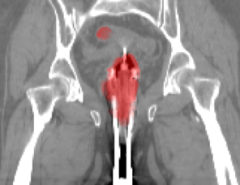Authors: Riccardo Mazzieri, Jacopo Pegoraro, Michele Rossi
Published on: June 25, 2023
Impact Score: 8.07
Arxiv code: Arxiv:2306.14233
Summary
- What is new: A neural network called STAR can reconstruct micro-Doppler sequences of human movement from highly incomplete channel measurements.
- Why this is important: Existing approaches to reconstruct micro-Doppler signatures from incomplete channel estimates produce poor results and are not suitable for real-time systems.
- What the research proposes: The proposed solution, STAR, combines an unrolled iterative hard-thresholding layer with an attention mechanism, providing an interpretable and lightweight architecture.
- Results: STAR substantially outperforms state-of-the-art techniques in micro-Doppler reconstruction quality and enables human activity recognition with 90% of missing channel measurements.
Technical Details
Technological frameworks used: A new architectural design combining unrolled iterative hard-thresholding with attention mechanism.
Models used: Neural network based on STAR.
Data used: 60 GHz channel measurements of human activity traces from a public JCS dataset.
Potential Impact
Wireless sensing technology providers, smart home companies, security and surveillance sectors, and healthcare monitoring businesses could all benefit or be disrupted.
Want to implement this idea in a business?
We have generated a startup concept here: SensoryNet.



Leave a Reply